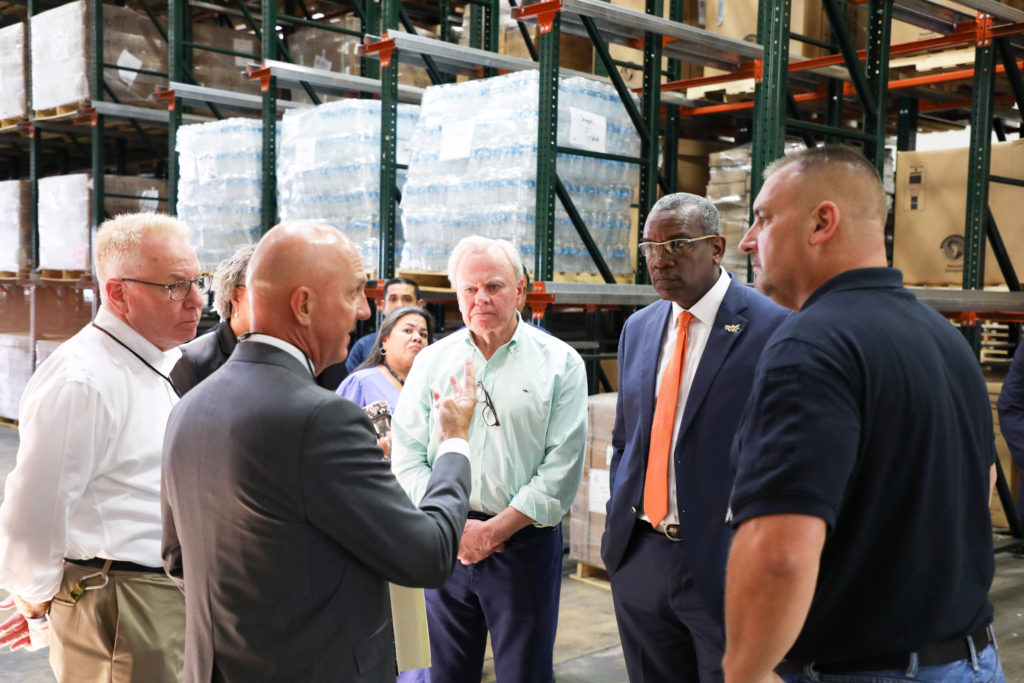SAN JUAN — Ahead of the June 1, start of the 2019 Atlantic Hurricane season, Governor Albert Bryan Jr and VITEMA Director nominee Daryl Jaschen, on Tuesday, visited a FEMA distribution center housing equipment and other sustenance commodities essential to the U.S. Virgin Islands’ disaster preparedness and response.
Governor Bryan and VITEMA Director Nominee Daryl Jaschen visited the distribution center in Bayamón, Puerto Rico and met with FEMA officials to discuss the supply chain logistics process and the requirements for coordination between FEMA and the Virgin Islands government ahead of hurricane season.
The distribution center in Bayamón supports FEMA disaster responders in both Puerto Rico and the U.S. Virgin Islands with critical equipment and supplies and also provide life-saving and life-sustaining resources during disaster operations.
“It was important for us to visit the distribution center ahead of the 2019 hurricane season to see first-hand what is there, and to initiate the work with FEMA officials to better coordinate the movement and delivery of supplies to the territory in a disaster. There were some critical breakdowns in logistics after the 2017 hurricanes that we do not want to reoccur. I have all the confidence in VITEMA Director Nominee Daryl Jaschen and Territorial Adjutant General Nominee Kodjo Knox-Limbacker, as they continue their work to ensure proactive disaster preparedness planning,” Governor Bryan said.
VITEMA Director Nominee Daryl Jaschen, on his second day on the job, Tuesday, laid out his goal for more efficient coordination in getting the supplies from the distribution center to disaster survivors in the territory.
“One of the goals of the territory going into the 2019 hurricane season is to be able to access vital real-time visibility of logistics from time-of-supply order to delivery,” Director Nominee Jaschen said.
At the start of hurricane season in 2017, the FEMA distribution center in Puerto Rico held a quarter-million meals, more than 700,000 liters of water and more than 13,000 tarps.
By September 15, 2017, following hurricane Irma, FEMA had sent to the USVI 90 percent of the bottled water, 61 percent of the meals and 100 percent of the tarps and cots from its warehouse.
Five days later, Maria struck Puerto Rico, closing its ports and preventing FEMA from receiving and shipping new supplies. A FEMA hurricane after action report recommended increasing the number of supplies it stocks outside the continental U.S. as well as developing a more comprehensive understanding of local, regional, and national supply chains.

